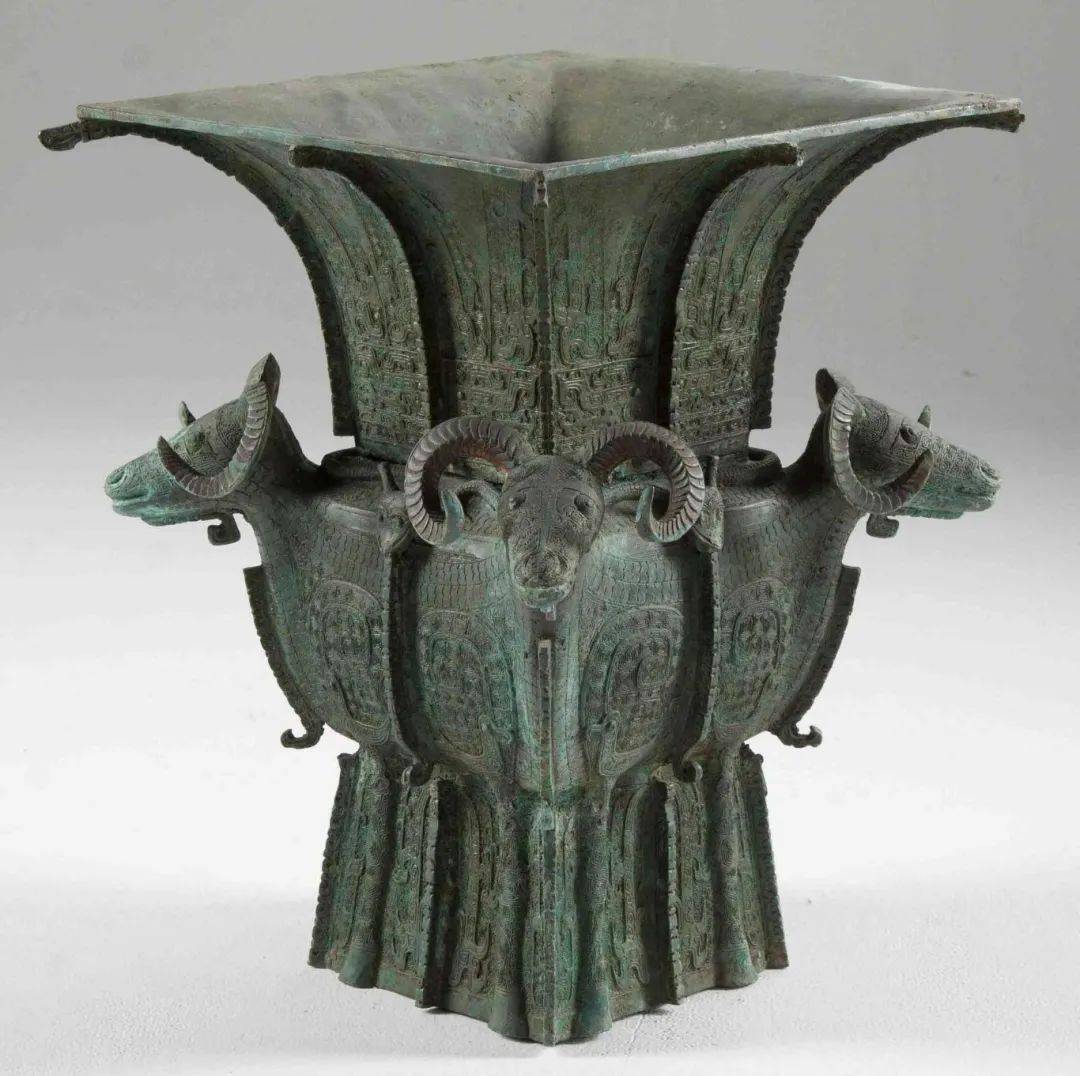When exploring the artistic achievements of ancient China, the Bronze Age stands out as a period of unparalleled technical and aesthetic sophistication. Among its most celebrated relics is the Four-Ram Square Zun, a monumental bronze vessel hailed as the “ultimate bronze典范” by historians. This article will guide you through the story of this magnificent artifact, from its creation to its miraculous modern rediscovery .
Unveiling the Masterpiece: Form and Function
The Four-Ram Square Zun, known in Chinese as Sì Yáng Fāng Zūn, is a ritual wine vessel from the late Shang Dynasty, dating back over 3,000 years. Zunrefers to a type of ancient Chinese wine vessel, typically characterized by a large opening, a bulging belly, and a high ringed foot. While most Zunare round, this square version is exceptional .
Its dimensions are imposing: it stands 58.3 centimeters tall, with each side measuring 52.4 centimeters, and weighs a substantial 34.5 kilograms, making it the largest surviving square Zunfrom the Shang Dynasty .
The vessel’s most striking feature is its ingenious integration of animal sculptures. Four coiled-horn rams form the core of its design. Their heads and necks protrude powerfully from the four corners of the vessel’s shoulders, while their bodies and legs are seamlessly blended into the belly and ring foot. This design is not merely decorative; the rams’ legs functionally support the vessel’s substantial weight, creating a harmonious and stable whole .
Adding to its dynamism, dragon motifs are woven into the design. Between the rams, on the vessel’s shoulders, are high-relief snake-bodied dragons, and a dragon head emerges from the center of each side . The surface is further adorned with an intricate tapestry of patterns, including banana leaf patterns, thunder patterns, scale patterns, and mythical creature motifs like the Kuidragon and beast faces . This combination of line engraving, relief, and full-round sculpture demonstrates a masterful blend of two-dimensional and three-dimensional art .
Symbolism and Spiritual Significance
In the Shang Dynasty, bronze vessels were not just utilitarian objects but were central to rituals and ancestor worship. The choice of rams as the primary motif is deeply symbolic. In Chinese culture, the ram has long been a symbol of auspiciousness and kindness. The character for “beautiful” (美, měi) is derived from a pictogram of a ram with large horns, and the ram is often associated with good fortune .
Furthermore, rams were commonly used as sacrificial offerings to gods and ancestors. Therefore, the Four-Ram Square Zun was likely a crucial ritual vessel used in ceremonies to express reverence and seek divine favor, embodying its owner’s hopes for prosperity and stability .
A Miraculous Journey: Discovery and Restoration
The modern story of the Four-Ram Square Zun is as dramatic as its design. It was accidentally discovered in April 1938 by farmer Jiang Jingshu and his brothers while they were planting sweet potatoes in Ningxiang County, Hunan Province .
Its subsequent journey was fraught with peril. After being sold to an antique dealer, it was confiscated by the local government to prevent it from being sold abroad. During the turbulent years of the Sino-Japanese War, the precious vessel was badly damaged in a Japanese air raid, shattering into more than 20 pieces . For years, its fragments were forgotten, stored in a wooden box in a bank warehouse .
The Zun’s rebirth is a testament to modern cultural preservation. In 1952, under the attention of the central government, the fragments were recovered. The challenging task of restoration was entrusted to master restorer Zhang Xinru, who spent over two months painstakingly piecing the national treasure back together. In a final touch of destiny, a missing fragment from the rim, which the discoverer Jiang Jingshu had kept as a memento, was returned in 1976, allowing for a more complete restoration . After its restoration, it was moved to the National Museum of China in Beijing, where it remains a star of the collection and is listed as a national treasure forbidden from leaving the country for exhibitions .
A Legacy Cast in Bronze
The Four-Ram Square Zun is more than an artifact; it is a window into the soul of an ancient civilization. It reflects the advanced casting technology of the Shang Dynasty, likely created using the piece-mold casting technique and secondary casting for the intricate ram horns and dragon heads . Its survival and restoration symbolize resilience. Today, as it stands proudly in the National Museum, it continues to awe visitors with its majestic presence, telling a story of artistic genius, spiritual belief, and a nation’s enduring connection to its cultural roots
